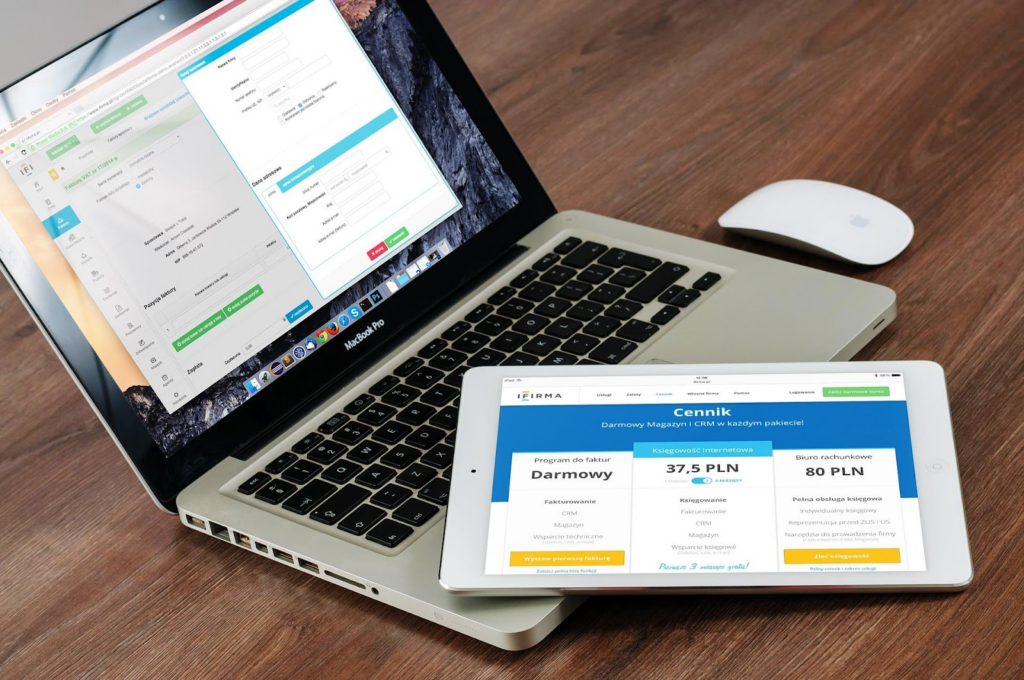In today’s digital world, mobile devices have become the go-to for browsing the internet. With the increasing number of people using their smartphones and tablets to access websites, it’s essential to ensure that your website is mobile-friendly.

A mobile-friendly website enhances the user experience and improves search engine rankings. However, creating a mobile-friendly website from scratch can be a time-consuming and expensive process. In this blog post, we will discuss six quick hacks that you can implement today to make your website more mobile-friendly. Without further ado, let’s dive in!
- Simplify Your Design
The first hack to make your website more mobile-friendly is to simplify your design. When it comes to designing for mobile devices, less is more. Cluttered designs with too many elements can overwhelm and frustrate mobile users. To simplify your design, consider using a minimalist approach, which emphasizes simplicity, clean lines, and negative space. Reduce the number of images, graphics, and videos, and use simple typography and color schemes.
You can work with experts to create an attractive and minimalistic design that is easy to navigate on both desktop and mobile devices. For instance, SEO services in Melbourne can help you build and optimize your website for mobile devices. The professionals will help you create a design that is tailored to your target audience and device type. By simplifying your design, you can create a more streamlined user experience that is easy to navigate and visually appealing.
- Use Responsive Design
Responsive design is a design technique that allows a website to adapt to different screen sizes, including mobile devices. By using responsive design, your website will automatically adjust its layout, font sizes, and images to fit the screen of the device being used. This means your website will look great on any device, whether a smartphone, tablet, or desktop computer.
Additionally, responsive design can improve your website’s search engine rankings since search engines prefer mobile-friendly websites. So, if you want to make your website more mobile-friendly, a responsive design must be used.
- Optimize Forms and Inputs
Forms and inputs are essential elements of any website, but they can be challenging to use on mobile devices. To optimize forms and inputs for mobile users, you should use larger input fields, increase the size of buttons, and reduce the number of fields required. You can also use auto-fill and auto-complete functions to make it easier for mobile users to fill out forms quickly.
Ensure that your forms and inputs are also easy to access and use, even on small screens. For instance, if you’re using drop-down menus for input fields, make sure that they are easy to select and navigate. Optimizing forms and inputs can improve the user experience for mobile users and increase conversions.
- Optimize Images and Videos
Large images and videos can slow down your website, which is particularly problematic for mobile users who may have slower internet connections. To optimize images and videos, you should reduce their size and resolution without sacrificing quality. You can also use image compression tools and lazy loading to speed up your website’s loading time.
Additionally, ensure that your images and videos are responsive and can adjust to different screen sizes automatically. You can do so by using HTML5 or CSS3 media queries to adjust the size of your images and videos. This can provide a better mobile user experience while improving your website’s search engine rankings.
- Use Accelerated Mobile Pages (AMP)
Accelerated Mobile Pages (AMP) is an open-source web framework that allows you to create fast and optimized content for mobile devices. With AMP, your pages will load significantly faster on mobile devices, which can improve the user experience and increase conversions. Additionally, it makes your content eligible for other features, such as the Top Stories carousel on Google Search.
With AMP, you can create engaging and interactive experiences for mobile users that will help you stand out from the competition. By optimizing your website for mobile devices with AMP, you’ll be able to increase user engagement and enjoy more success in search engines.
- Make Navigation Easily Accessible and Intuitive

Navigation is crucial for any website, but it can be challenging to use on mobile devices. To make navigation mobile-friendly, you should use simple and clear menu icons and labels, reduce the number of menu items, and ensure that the menu is easy to access and use.
Additionally, you can use breadcrumbs and back-to-top buttons to help users navigate your website more easily. By making navigation more accessible and intuitive, you can improve the user experience for mobile users and increase engagement and conversions.
Having a mobile-friendly website is no longer an option but a necessity. By implementing these six quick hacks, you can make your website more mobile-friendly without breaking the bank or spending too much time. Simplifying your design, using responsive design, optimizing forms and inputs, optimizing images and videos, and making navigation easily accessible and intuitive can significantly improve the user experience for mobile users. So, follow these tips and ensure that your website is mobile-friendly to reach a wider audience and improve your online presence.


